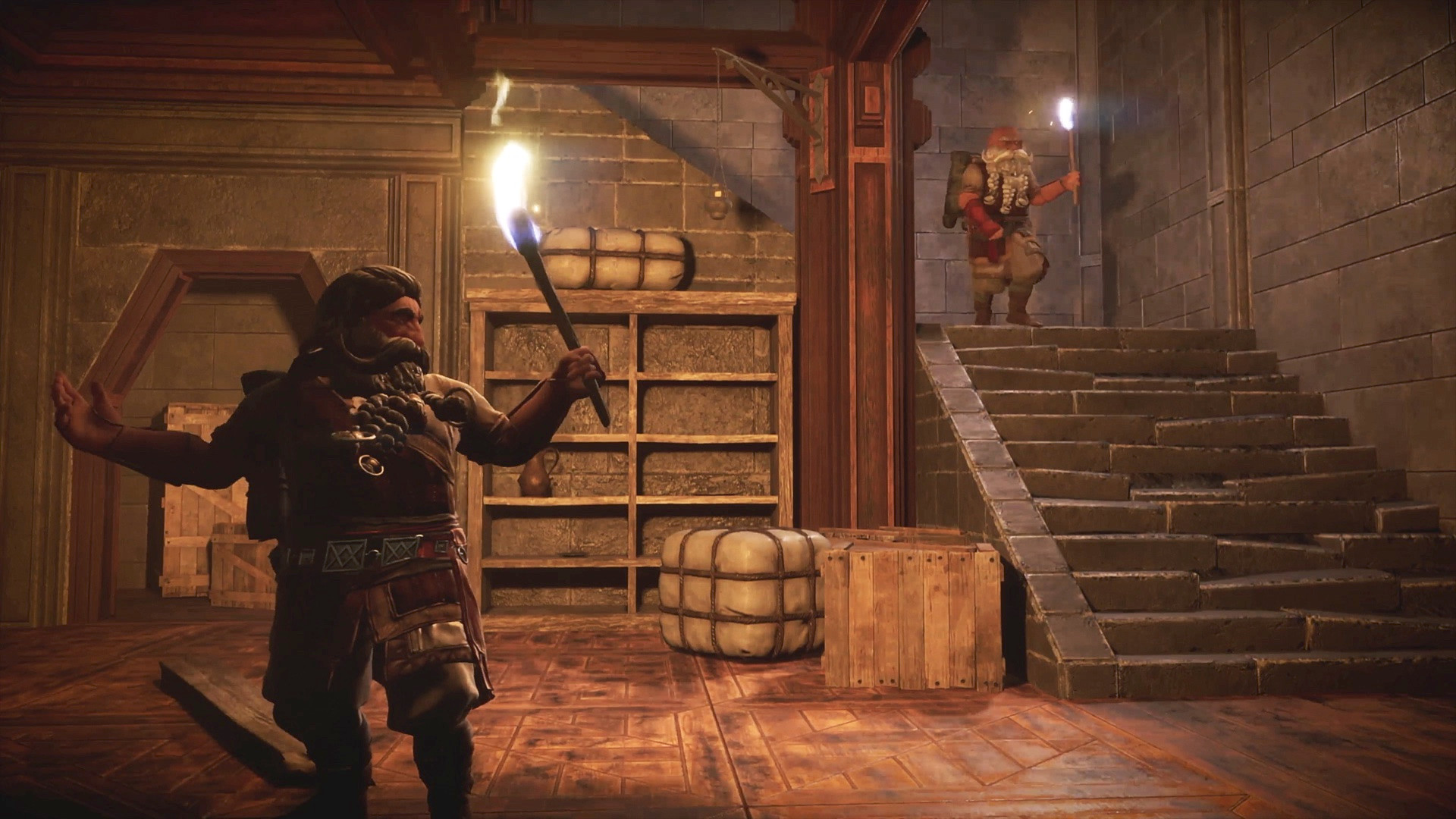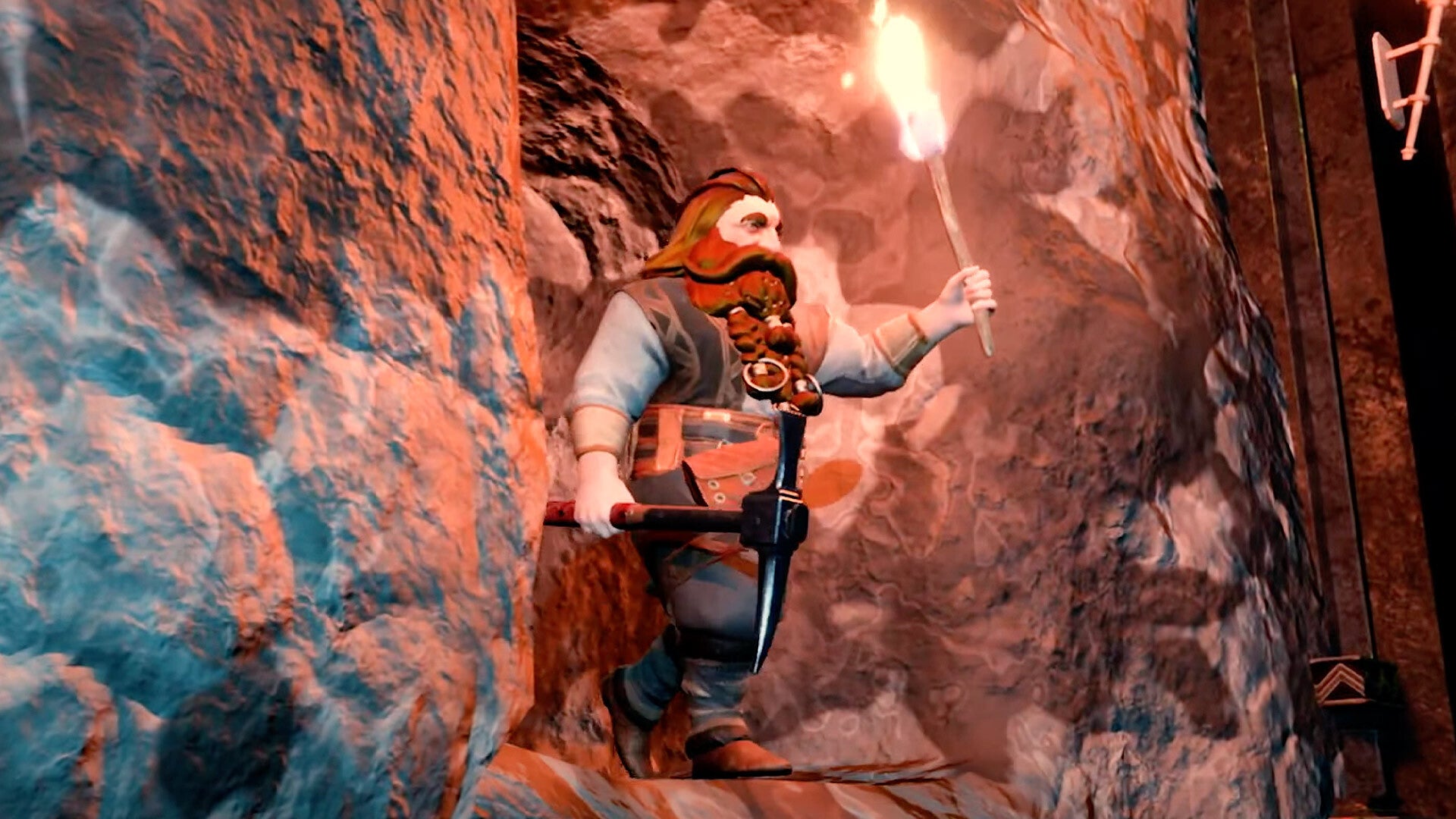Lord Of The Rings: Return To Moria [Gameplay & Simulation]

Take a journey under the surface as we explore the immersive world of “The Lord of the Rings: Return to Moria.” In this in-depth analysis, we examine the subtleties of a game that aims to reinvent the survival genre against the legendary Middle-earth setting. We go through the game’s strengths and faults, offering a balanced perspective of this mammoth endeavor, from the bewildering depths of Moria’s procedurally generated tunnels to the strategic difficulties of base construction and the compelling drama of survival.
Come along on this voyage with us as we solve the puzzles, face the darkness, and determine if “Lord of the Rings: Return to Moria” is a shining example of creativity or gets lost in its own maze.
Lord Of The Rings: Return To Moria

The location of “Lord of the Rings: Return to Moria” is one of its most notable aspects. In contrast to other open-world survival games that include vast settings, Moria is a boxy, enclosed mine that offers a unique twist on the genre conventions. Players face a maze-like struggle navigating the game’s terrain, which is mostly composed of dynamically generated dwarven halls and caverns.
Dungeon Crawlers
The dungeon crawler ambiance of Moria’s design makes for a more satisfying and evocative gameplay experience. Exploration becomes more difficult due to the indestructible walls around Moria; it becomes similar to exploring a dungeon. This divergence from the standard open-world paradigm adds to “Return to Moria’s” distinctiveness.
One unique feature of games with an underground theme is the day-night cycle, which enhances the immersive mood. Players must carry torches because of Moria’s darkness, which heightens the feeling of being alone and unknowing. With a minimalistic approach, the sound design further enhances the mood by relying on reverberating noises to create a chilly, desolate ambiance.
The Factor of Survival

Players must concentrate on constructing bases, making equipment, and making use of resources like plants and rat meat while stranded under the old mountain. In order to locate an escape and return to their expedition, players must navigate a survival factor included in the game. A strategic element is added to the gameplay by having to obtain raw resources during the day and deal with nighttime threats.
Tension while exploration is increased by the restricted health regeneration mechanism that is only available at base camps. Although losing all of your money when you die in the game raises the stakes, getting back to the point of death is a difficult procedure.
- This element, which is evocative of the Soulslike genre, enhances the overall feeling of achievement when teleportation map stones are unlocked.
- A very thrilling scene in “Return to Moria” is the steep drop into a gigantic abyss with no platforms or ladders in sight.
- The voyage incorporates a strategic and creative aspect as players are forced to depend on their construction skills.
- There is a chance for some very unforgettable moments in this game, and the rush of making it to the bottom and gaining a grip is one of them.
Simulations and Gameplay

The goal of “Lord Of The Rings: Return To Moria” is to replicate an underground environment, and goblin patrols seem to move dynamically in the gaming environment. But sporadic spawning problems and erratic adversary behavior taint this grandiose simulation. Expectations are not met by the game’s effort to implement a dynamic danger level dependent on player noise since much of the game permits loud exploration with no repercussions.
- As with other survival games, the fighting system turns out to be one of the worst parts of the title.
- With weapons and shields at their disposal, players encounter awkward combat systems that provide disappointing feedback.
- Combat is not the best because of the imprecise shooting and the hard transition between enemies.
- Bugs and performance problems, such as background stuttering, significantly reduce the overall experience.
- “Return to Moria” does a good job of portraying the atmosphere of a gloomy and foreboding Moria, although there are a few crucial execution errors.
The realistic portrayal of Moria in the game demonstrates the developer’s dedication to adhering to the Lord of the Rings license. However, the whole experience is diminished by continuous combat difficulties, performance concerns, and uneven simulations.
Conclusion
To sum up, “The Lord of the Rings: Return to Moria” is a fascinating entry into the survival genre that provides players with an original and difficult experience inside the well-known Middle-earth setting. The ambient design of the game is a testament to its dedication to portraying the spirit of Moria; it gives the underground depths a tangible feeling of mystery and fear. The game’s potential is highlighted by flashes of brilliance found in the strategic survival features and unforgettable moments like the abyssal plummet.
Even at the deepest depths, a game’s success depends on a fine balance between ambition and execution, as seen by its shortcomings, which may appeal to die-hard Lord of the Rings fans looking for a new perspective on Middle-earth experiences. “Return to Moria” is a brave effort, but like the illusive riches tucked away inside the maze-like corridors of Moria itself, whether it succeeds or serves as a cautionary tale depends on the viewer.





![How To Build An Efficient Ironman In RuneScape 3 [A Complete Guide]](https://ciceropost.com/wp-content/uploads/2023/12/Ironman-768x432.jpg)